What We Do

Our Mission
The mission of the Postpartum Contraceptive Access Initiative is to ensure all people have access to the full range of postpartum contraceptive methods before leaving the hospital after a delivery.
Our Approach
PCAI prepares obstetrician–gynecologists and other health care providers to offer the full range of contraceptive methods after delivery through comprehensive, individualized trainings.
The immediate postpartum period can be a particularly favorable time to provide LARC methods, and research shows that postpartum LARC provision is safe and effective. Expanding access to postpartum initiation of effective contraception, including LARC methods, can empower patients to choose the best method for them, and can reduce rapid repeat and unintended pregnancies to improve health outcomes.
Through onsite training and support, ACOG supports
implementation of immediate postpartum LARC provision at participating sites, supporting access to the full range of contraceptive methods immediately postpartum. This can result in patients obtaining their desired contraceptive method and birth spacing while also having higher satisfaction and continuation rates with their choice of postpartum contraception.
The ACOG LARC Program created PCAI in consultation with more than 20 family planning clinicians and experts, many of whom implemented immediate postpartum LARC at their own institution. The insights and best practices gleaned from these experts inform the PCAI program design.
Our Approach
PCAI prepares obstetrician–gynecologists and other health care providers to offer the full range of contraceptive methods after delivery through comprehensive, individualized trainings.
The immediate postpartum period can be a particularly favorable time to provide LARC methods, and research shows that postpartum LARC provision is safe and effective. Expanding access to postpartum initiation of effective contraception, including LARC methods, can empower patients to choose the best method for them, and can reduce rapid repeat and unintended pregnancies to improve health outcomes.
Through onsite training and support, ACOG supports implementation of immediate postpartum LARC provision at participating sites, supporting access to the full range of contraceptive methods immediately postpartum. This can result in patients obtaining their desired contraceptive method and birth spacing while also having higher satisfaction and continuation rates with their choice of postpartum contraception.
The ACOG LARC Program created PCAI in consultation with more than 20 family planning clinicians and experts, many of whom implemented immediate postpartum LARC at their own institution. The insights and best practices gleaned from these experts inform the PCAI program design.
Evidence-Based Program Design
PCAI uses an evidence-based, systems approach to offset implementation barriers. Key program components include:
Three-pronged implementation model bolsters success and sustainability.
Evidence-based research supports the use of a tiered approach for implementing immediate postpartum LARC and ACOG believes this staged approach is crucial for successful implementation. These phases include:
- Exploration. This stage is the first and most important in assessing and establishing the foundation for a successful immediate postpartum LARC program.
- Installation. This stage covers preparation to offer immediate postpartum LARC.
- Implementation and Sustainability. This stage covers the piloting and adaptation phase of offering immediate postpartum LARC.
Local leadership & insights inform individualized training plan.
Providers know their institution’s needs the best. Therefore, prior to any training, ACOG staff learn from local partners with on-the-ground insights and collaborate with them to create an individualized training plan for their institution through the completion of a needs assessment. Potential trainings include:
- Billing, Coding & Payment for Immediate Postpartum LARC Services
- Contraceptive Counseling for the Immediate Postpartum Period
- Immediate Postpartum Contraception and Breastfeeding
- Immediate Postpartum LARC for Clinicians Doing Deliveries
- Immediate Postpartum LARC Implementation: Systems and Sustainability
- The Role of Nurses in Immediate Postpartum LARC Implementation
Training partners have included: hospitals, health systems, residency programs, perinatal quality collaboratives, state-based initiatives, and other key partners.
The importance of shared medical decision making highlighted in every training.
All PCAI trainings highlight the importance of patient autonomy and discuss ways to engage in shared medical decision making, which can increase patient engagement and reduce risk resulting in improved outcomes, satisfaction, and treatment adherence.
Train-the-trainer model fosters sustainability through a pool of trained, local clinicians.
PCAI uses a “train-the-trainer” model when a training is requested by a participating site. The “train-the-trainer” model builds a pool of trained clinicians who can both provide ongoing support onsite after the ACOG-provided training and teach others the knowledge and skills within their content area.
